COOPERATION MODEL
ARTIFICIAL INTELLIGENCE
PRODUCT ENGINEERING
DevOps & Cloud
LOW-CODE/NO-CODE DEVELOPMENT
INDUSTRY
FRONTEND DEVELOPMENT
CLOUD DEVELOPMENT
MOBILE APP DEVELOPMENT
LOW CODE/ NO CODE DEVELOPMENT
EMERGING TECHNOLOGIES








The frontend world has changed a lot in the past ten years. We started with simple tools like jQuery and basic JavaScript. Now we have modern frameworks that use virtual DOM, React components, and server-side rendering to build better websites and apps. And these changes are in constant motion.
For developers, the question has shifted from whether to adopt these tools, to which ones to choose. Should you focus on the latest frontend technologies that promise speed and performance, or rely on proven front end development technologies with long-standing community support? The balance is tricky — mastering new skills while staying grounded in fundamentals that won’t fade next year.
Whether you're building a startup product, scaling an enterprise site, or modernizing old systems, your choice of frontend technology in 2025 will shape your project’s future. Let’s explore the best frontend technologies and new tools for developers this year to help you decide which ones truly fit your needs.
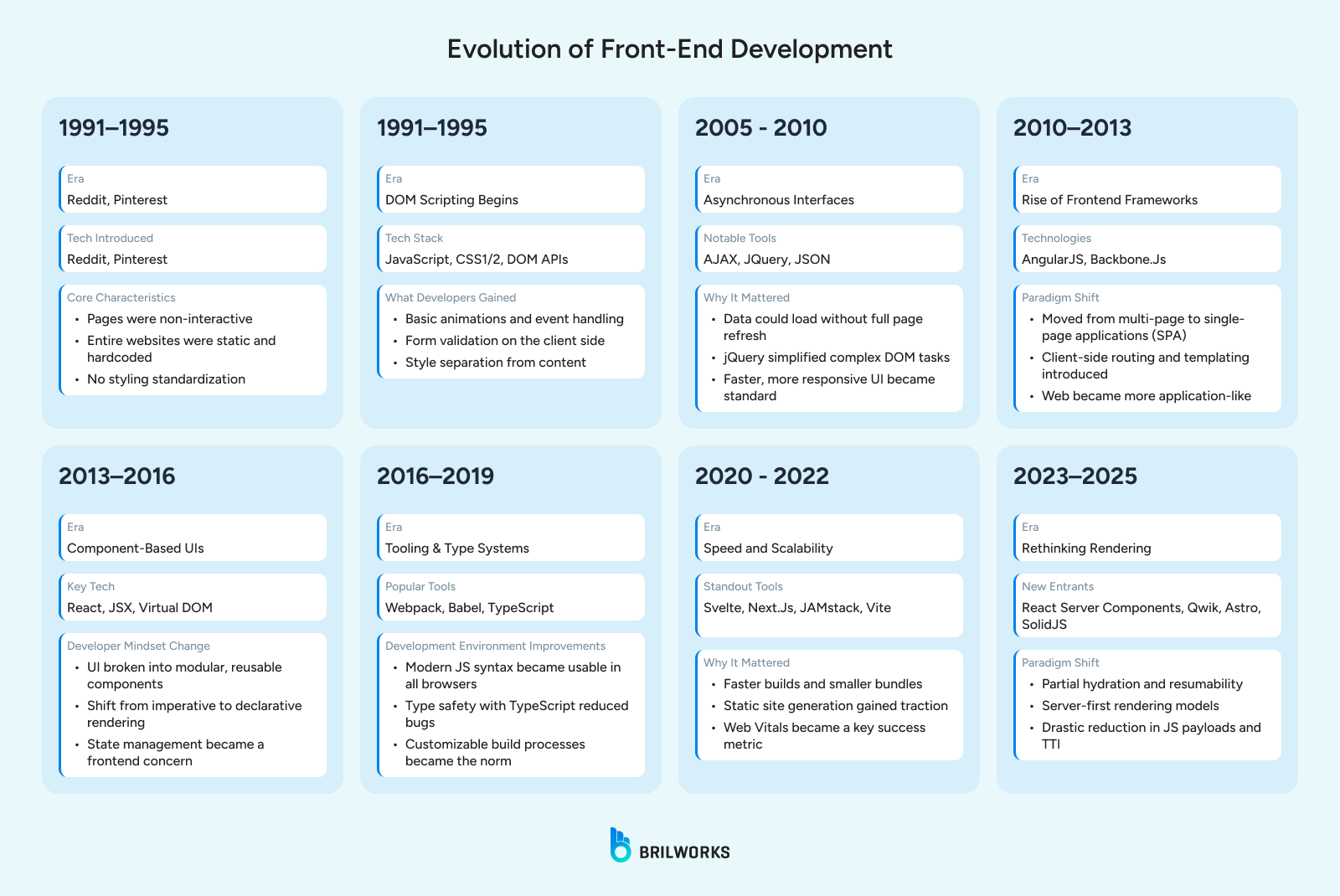
This is not a ranking. The tools listed here are in no specific order. Each one does something different. Some are better in certain situations, others are built for different kinds of work. There is no clear winner. The real task is to figure out what suits your project. That is what actually helps.
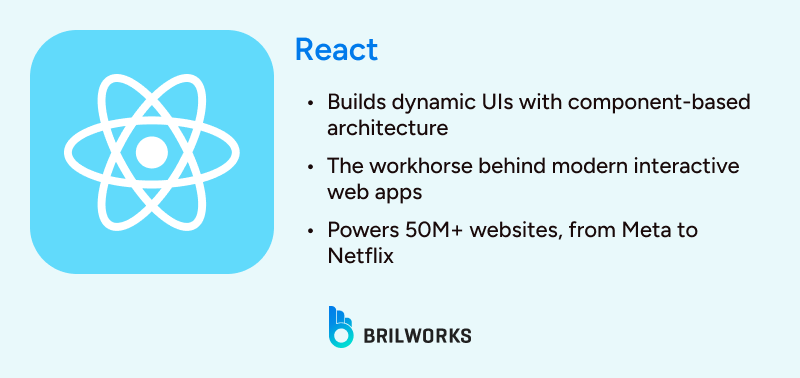
In 2025, React holds its ground as the most used front-end library. The latest Stack Overflow Developer Survey shows that 44% of 23,678 developers rely on it for building web interfaces. Created and maintained by Meta, React introduces a way to build UIs through isolated, reusable pieces, something that fits well in projects where multiple teams contribute to different features. Its model has quietly become the blueprint for how many newer frameworks think about UI development today.
Since its release in 2013, React has moved from an internal Facebook tool to a widely adopted front-end library. As of 2025, it’s used by companies like Netflix and Airbnb, supported by strong community resources and a mature ecosystem of third-party tools.

Angular is another popular framework from the JavaScript family, favored by enterprise developers. The framework is widely used across many sectors such as finance, healthcare, and government. It has been used in many famous apps such as Deutsche Bank and the US Department of Defense.
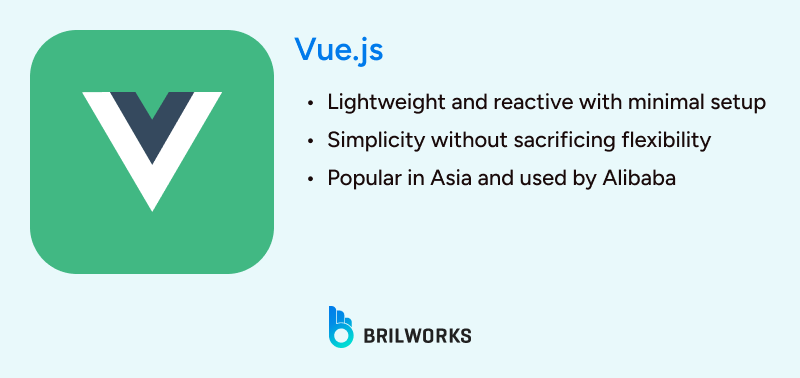
VueJS was created by Evan You after he realised that the then-existing frameworks, such as Angular, were complex for many use cases. Vue is today one of the most popular front-end technologies, known for its gentle learning curve.

In 2024, it was the third most-admired web framework in the Stack Overflow Developer survey. Svelte is widely popular among front-end developers for its performance. As per industry reports, its adoption continues to grow in e-commerce development. Plus, it has a gentle learning curve that adds to its growing popularity.
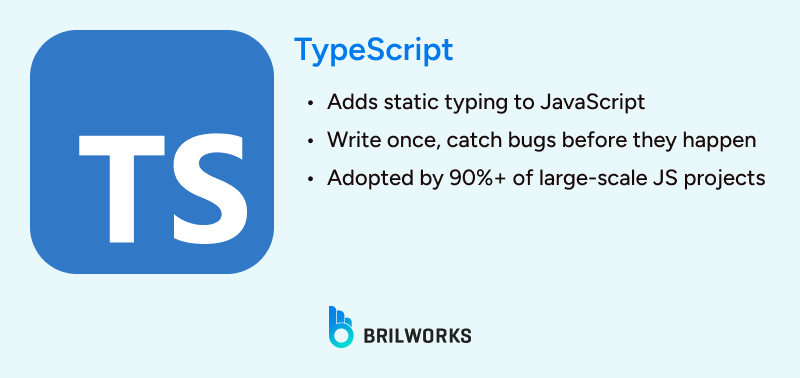
TypeScript was created to overcome the weaknesses of JavaScript. It is favored by JavaScript in large-scale development, due to the reason it's strictly typed. As an open-source programming language, it is managed by Microsoft. Its adoption grew nearly three times, noted in a report published by JetBrains. In 2025, it is the fifth most used programming language worldwide. Microsoft reportedly plans to rewrite its core to make it 10x faster, aiming to boost its popularity in the evolving front-end world.
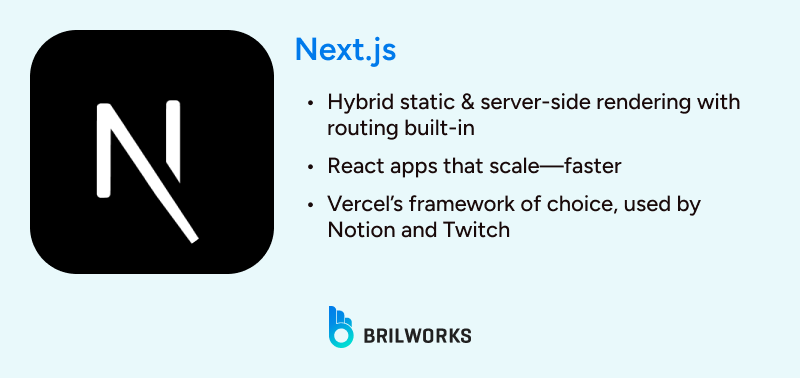
It is the 4th-most popular web framework, as per the Stack Overflow Developer survey. Next.js is used in high-performing and SEO-friendly front-ends. NextJS is popular among expert front-end developers as it supports various modern techniques such as server-side rendering, static site generation, and client-side rendering. In addition, it provides full-stack development capabilities.
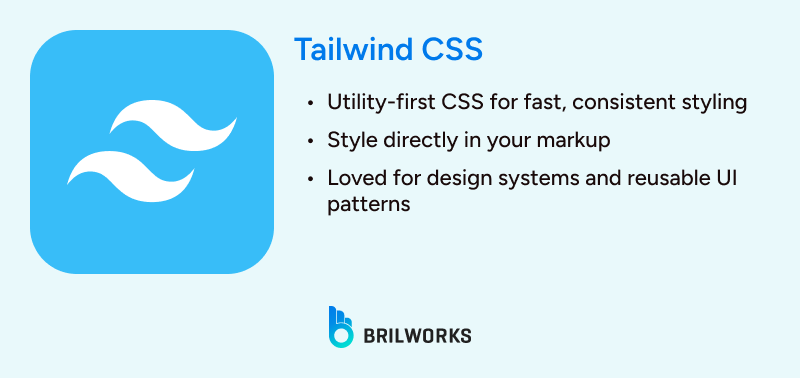
It is a utility-first framework, meaning it provides a series of large collections of ready-made classes that you can directly use to HTML components. It has gained so much popularity in front-end development that we can see in many yearly surveys. Instead of pre-built components, it offers low-level utility classes, also known as single-purpose CSS classes. These classes offer an extreme level of customization that developers often don't find in traditional frameworks. It uses popular JavaScript frameworks to handle the styling of the front-end part.
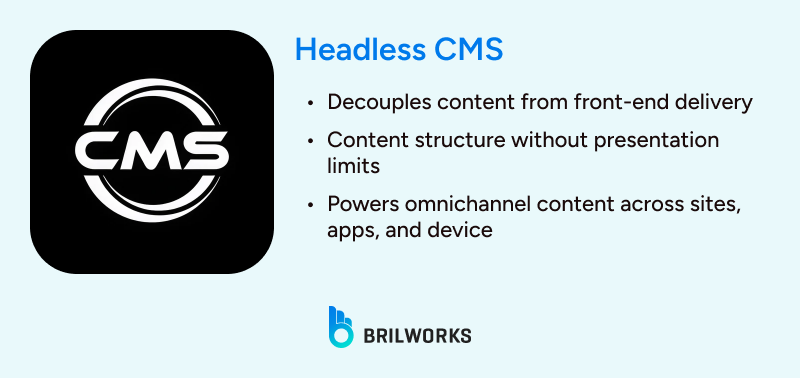
Headless CMS are popular as they provide a great level of flexibility that one may not find in traditional CMSs. They decouple front-end and back-end, enabling developers to use their favorite tech stack in different parts of an application. In other words, developers can use any front-end technology they prefer (React, Vue, etc.) to display the content, allowing for omnichannel content delivery and future-proofing the technology stack.
They are one of the popular technologies for the reason that digital space is expanding beyond mobile and desktop screens. And in a multi-device world, sticking to one tech is complicated to build an effective application that can run across multiple devices, including wearables. As per industry reports, they are being used by around 64% of enterprises worldwide. Some of the popular headless CMS are Storyblok, Strapi, Sanity, and Contentful.
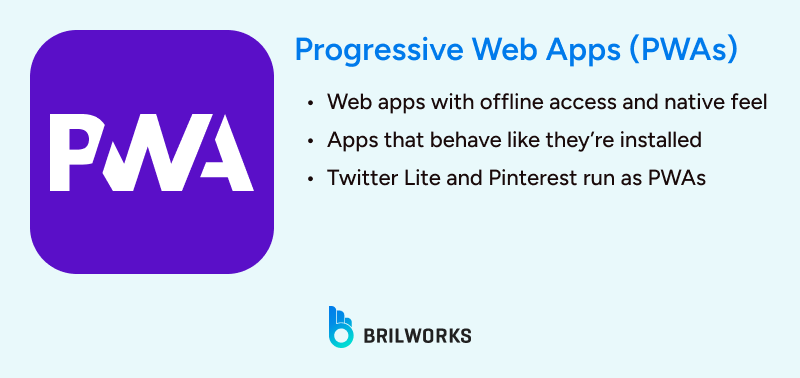
Progressive Web Apps (PWAs) exist alongside native cross-platform solutions. PWAs offer an app-like experience directly from a web browser. These apps include features like offline access and push notifications.

WebAssembly is a transformative technology for high-performance applications on the web. WebAssembly allows developers to write code in other languages (such as C++, Rust, and Go) and execute that code in the browser at near-native speeds. This opens up the potential for web games, web-based video editors, and other computationally intensive tasks that previously existed only as native applications.
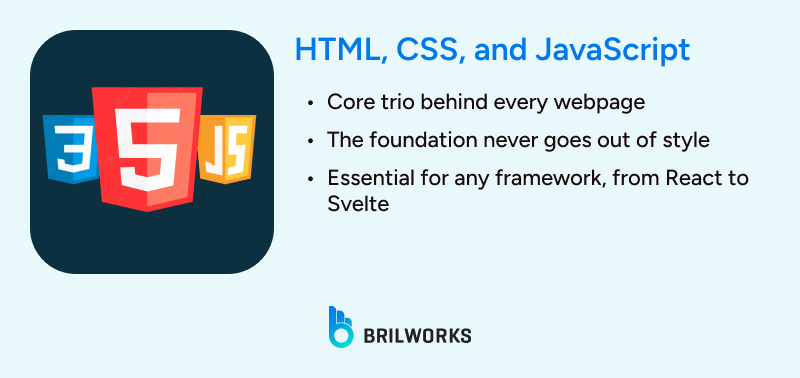
They are the building blocks of everything on the web. HTML is the structure, CSS is the look, and JavaScript is the apparatus. There are no frameworks or libraries if there is no HTML, CSS, and JavaScript, so you must know and master this trio as a front-end developer.
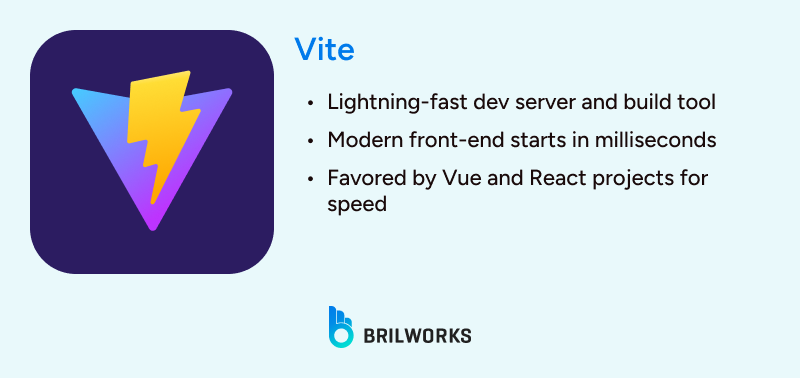
A recent and impactful entry into the build tool space, Vite has rapidly gained popularity. It distinguishes itself with its focus on speed, using native ES modules for an incredibly fast development server and hot module replacement. This approach has significantly improved developer experience and efficiency for projects using modern frameworks.

Webpack is an incredibly flexible asset bundler that is used to handle anything from JavaScript and CSS to images and other fonts. It comes up with an impressive array of loaders and plugins, making it a popular front end choice for larger, more complex projects.
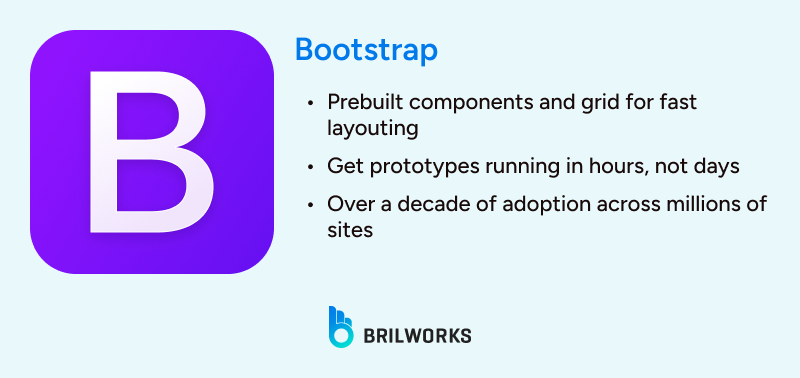
First introduced to its users by Twitter in 2011, Bootstrap is still one of the most popular CSS frameworks around. This is due to the abundance of pre-defined, responsive elements and a grid system. Bootstrap is ideal for fast prototyping and those developers who are creating mobile-first websites that are of a consistent, polished appearance.
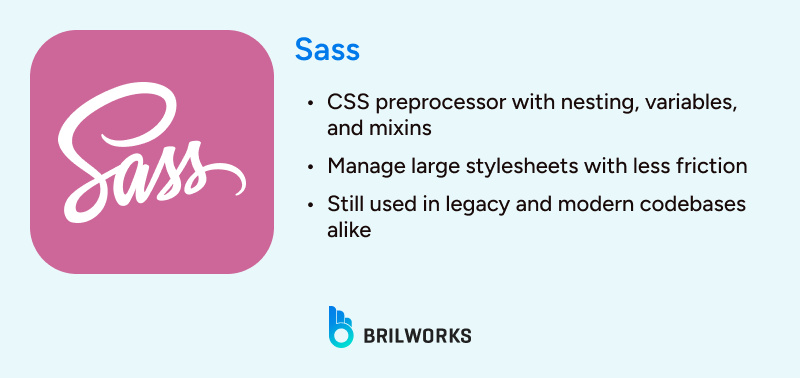
Sass (Syntactically Awesome Style Sheets) is a preprocessor scripting language that is compiled into CSS. Sass extends CSS with features that make writing large stylesheets easier to manage, like variables, nesting, and mixins, and encourages best practices by reducing the amount of repetitive code. Sass is an indispensable tool for developers creating complex, custom designs.
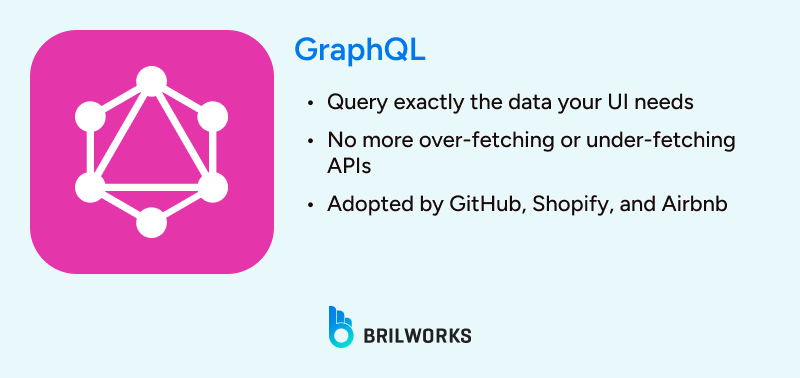
GraphQL is a query language for your API that was created by Facebook. GraphQL is different from traditional REST APIs in that the client is in control of the data it requests, no more, no less. This means that data efficiency is enormous, which can lead to huge performance gains, especially over mobile networks, and drastically reduced number of requests a front-end application has to make.

React Native is an open-source mobile framework developed by Meta. React Native enables developers to develop apps for iOS and Android with a shared codebase in JavaScript and React. The extensive popularity of React Native can be observed in a wide array of products from platforms like Instagram to Discord, showing that the framework has achieved numerous followers and meets developers and teams with a goal of shortening the time-to-value of an app without sacrificing native-like performance.
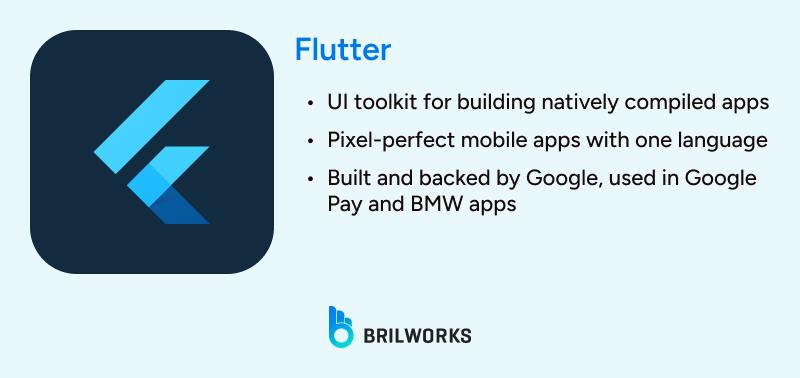
Google's Flutter is a UI toolkit for building natively compiled applications from a single codebase. Its expressive UI and speed powers apps like Google Pay and eBay Motors, and many others. The growing number of developers using Flutter, along with its availability for web and desktop apps, along with mobile apps, has made it one of the most used frameworks out there.
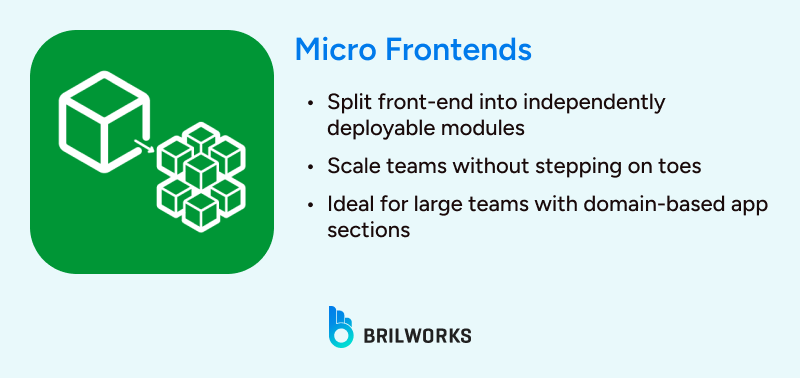
Micro frontends are a software architecture style that breaks a monolithic front-end application into smaller, more manageable parts. This allows teams to work on different sections of a website independently of each other and use whichever technology they want to build their section. The result is faster development cycles, improved scalability, and greater autonomy for teams.
The non-negotiable core of all web development is HTML, CSS, and JavaScript. An expert understands that these aren't just languages but the fundamental principles of the web. All other tools are simply layers built on top of them, and mastery of these basics is crucial for debugging and optimization.
Choosing between React, Angular and Vue.js is a strategic choice. React gives you maximum flexibility and has an enormous ecosystem, perfect for dynamic UIs. Angular is the enterprise standard and offers a consistent and opinionated framework for large, long-lived applications. Vue.js is a happy medium, allowing for either the most minimal framework, or something more fully featured and increasing in adoption that is easy for common developers to pick up.
For projects prioritizing performance, Svelte is the best option. The compiler-based approach endows it with super fast and light applications. In terms of tooling, TypeScript is an industry standard for code quality and maintainability for large codebases. Vite helps with the build process with its quick development server and adds an efficiency bump in productivity.
In terms of styling, Tailwind CSS is quickly becoming the template of choice, offering a utility-first approach to design deliverables that get custom front-ends living quickly. In regards to data, GraphQL provides an excellent alternative to the traditional API fetching interfaces, allowing developers a data fetching layer on the network that has dramatically less overhead and can give developers fine-grained control on what they're requesting.
Micro frontends are an important architectural pattern for large complex applications, allowing teams to concurrently generate independent parts of an application, providing a better ability to scale and autonomy. Furthermore, Progressive Web Apps (PWAs) provide an important strategy for user engagement as they create a continuum between web and a native apps by enabling offline functionality and installation on the home screen.
In 2025, the front-end ecosystem is more mature and diverse than ever. Each frontend technology we’ve discussed comes with its own strengths and trade-offs — performance, scalability, developer experience, and long-term sustainability.
For businesses, the decision isn’t just about what’s trending. It’s about selecting the best frontend technology for your project that aligns with user needs, delivery speed, and future growth. Are you aiming for predictable scalability with React? Enterprise-grade consistency with Angular? Or a simpler learning curve with VueJS? Each option has its place.
At Brilworks, we help companies weigh these choices practically. Our expert front-end developers consider architecture, industry context, and long-term viability before recommending tools.
Whether you’re launching a new platform or upgrading an existing one, our team can guide you through the latest front end development technologies to design the right stack for your goals.
Get In Touch
Contact us for your software development requirements
Get In Touch
Contact us for your software development requirements